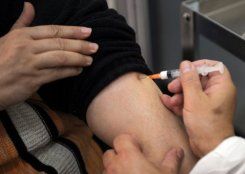OF THE
TIMES
"The latest allegations against Dr Andrew Wakefield are quite extraordinary. It seems that certain factions of the medical establishment are intent on hounding him to the grave.Dr. Halvorsen has been telling the truth, fearlessly, for quite some time.
The accusations of journalist Brian Deer make no sense at all. They appear to centre around the fact that elements of the hospital medical records, as reported in the Lancet 1998 paper, are at odds with other aspects of the children's medical records, mainly those of the children's General Practitioners (GPs). This is hardly surprising as the hospital doctors who recorded the children's medical history (which was not, in any case, done by Dr Wakefield) would not have had access to the GPs' medical notes. Medical histories, taken at different times by different healthcare professionals will inevitably have some inconsistencies.
What is so disturbing is that the editor of the BMJ, who should have known better, appears to have fallen for Deer's spurious arguments hook, line and sinker.
We have to take a step back and wonder what is really going on here. To go to such extreme - and desperate lengths - to annihilate Dr Wakefield (the person, note, not the science) some people must be very afraid. Afraid, presumably, that parents might actually believe something that is blatantly obvious: that is that all vaccines can cause serious adverse reactions, including autism. By denying what is not only obvious but also supported by a wealth of scientific evidence these obsessive vaccine protagonists risk losing the trust of all parents and destroying the whole vaccine programme, the very thing that they are trying to prevent happening."



Comment: For more information about how toxic chemicals like petrol can be harmful to human health read The Day the Water Died: Detoxing after the Gulf Oil Spill.
From the article: